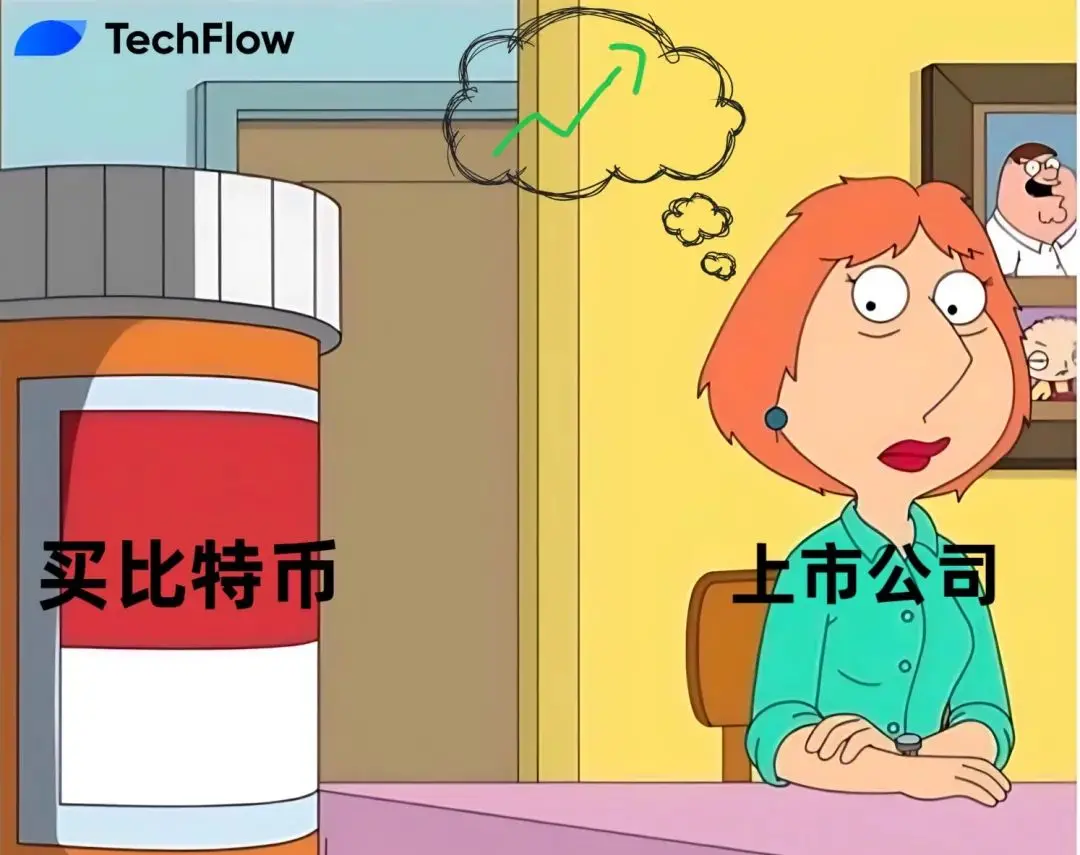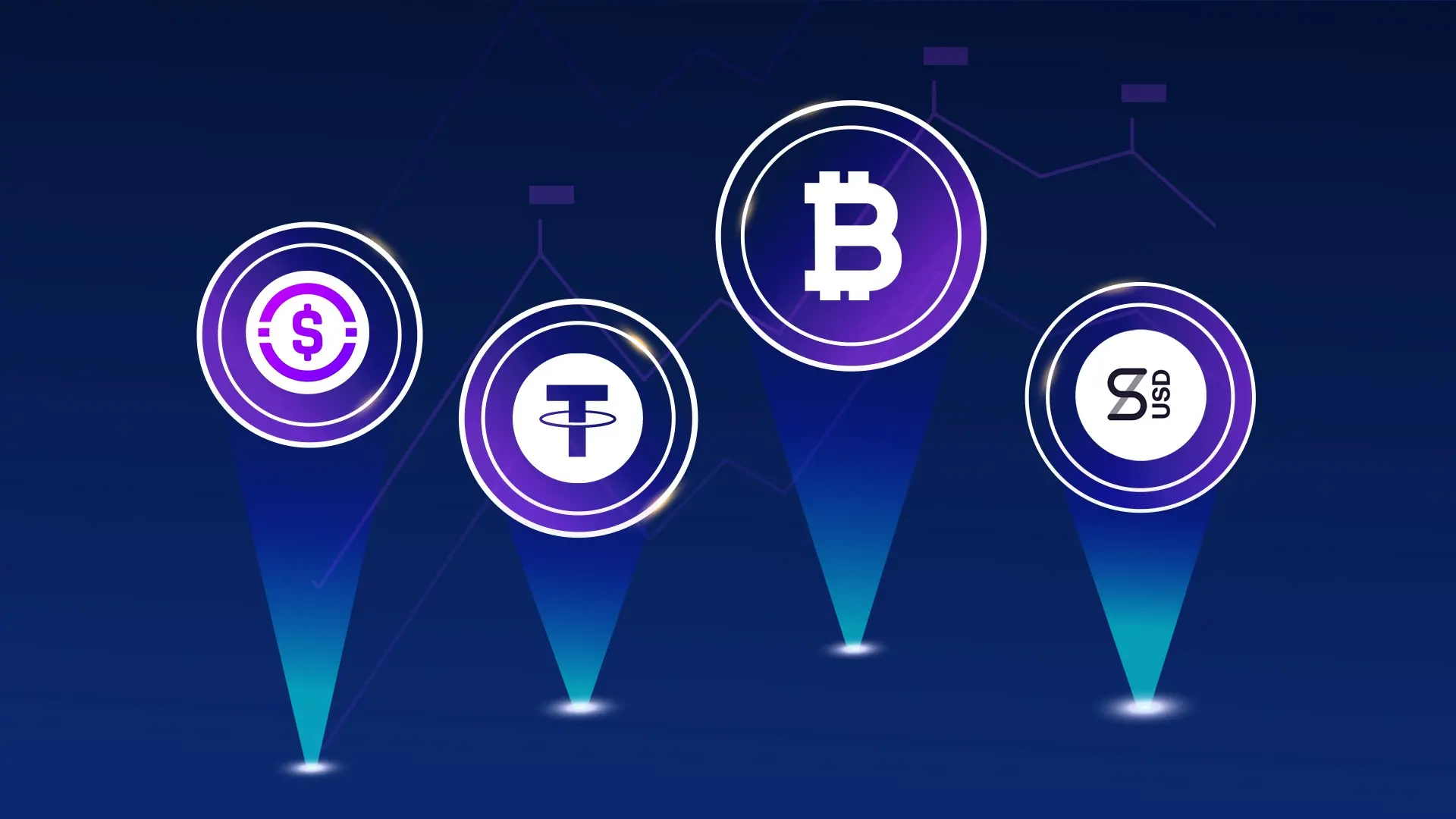How does Frax stand out in algorithmic stablecoins?
Original Title: How Frax beats the Rest
Original Authors: Jackchong.eth & 0xkowloon.eth
Compiled by: TechFlow intern
Stablecoins account for a significant portion of the total market capitalization of cryptocurrencies, with a market size exceeding $180 billion. To put it simply, stablecoins are a type of digital currency whose value is pegged to a "stable" reserve asset, typically the US dollar. For institutions, stablecoins serve as a wedge into the broader digital asset market—offering higher yields and faster settlement while retaining the benefits of low volatility.
Despite the promise of decentralization in cryptocurrencies, stablecoins are still predominantly dominated by centralized products. Over 80% of the market is represented by fiat-backed assets—such as USDC and USDT, issued by centralized entities Circle and Tether Holdings, respectively.

As centralized stablecoins face regulatory scrutiny, decentralized stablecoins have become more attractive. In December 2020, the market capitalization of fiat-backed stablecoins was 21 times that of algorithmically-backed stablecoins; today, that ratio is only 5 times.
This article is an in-depth study of Frax Finance. It is an algorithmically-backed stablecoin that has seen its market capitalization grow by nearly 530% since October 2021. Its total value locked (TVL) has reached $2 billion, making it the fastest-growing protocol currently.
Building a robust algorithmically-backed stablecoin is quite challenging, requiring the fulfillment of three core capabilities:
Stability (low volatility)
Maintaining a peg to the chosen asset over a period
High utility (integration with a broader ecosystem)
Niall Ferguson, in his book Civilization, attributes the economic advancement of the West compared to other countries to six factors, including competition, property rights, and medicine, which he refers to as "killer applications."
Haseeb Qureshi from Dragonfly refers to Layer 1 as cities, while Balaji calls a digitally native nation a "crypto civilization." In this text, to pay homage to Niall Ferguson, we refer to Frax as a civilization akin to the West. Let's hear our argument.
We have identified three killer applications that enable Frax to outperform its competitors.
Continue reading to understand how Frax beats other competitors.
What is Frax?
Collateral Ratio
How Frax beats other companies: 3 killer applications
Killer Application 1: Everyone Wants to Be Curve
Killer Application 2: Frax Flex
Killer Application 3: Algorithmic Market Operations (AMO)
What is Frax?
According to the typology of stablecoins (which currently lacks a unified paradigm), Frax can be classified as a "partially crypto-backed stablecoin," characterized by the following features:
Backed by cryptocurrency rather than fiat.
Partially collateralized. The value of minted tokens is partially supported by the assets in the treasury. Over-collateralized tokens (like DAI) or completely uncollateralized tokens (like the now-defunct Basis).
Decentralized. It is community-managed and not owned by a central entity (for example, Tether is owned by Tether Holdings, and USDC is owned by Circle).
Dual-token model. The protocol also issues a secondary token, $FXS, which is used for governance and earns a share of the protocol's profits from its activities.
Pegged to the nominal US dollar rather than floating freely (like RAI).
Collateral Ratio

The collateral ratio (CR) determines how much collateral a user needs to mint one FRAX (as of this writing, the CR is 85%). FRAX is a stablecoin pegged to the US dollar. On the other hand, FXS is the governance token of Frax Finance. Together, they form the tax model of the stablecoin.
This means that to mint $1 worth of FRAX, one needs to deposit $0.85 worth of USDC (or other acceptable collateral) and $0.15 worth of FXS. Conversely, if you want to redeem your FRAX, you will receive $0.85 worth of USDC and $0.15 worth of FXS.
Frax's CR is a dynamic ratio. The CR fluctuates based on market demand and supply forces. It changes according to the expansion and contraction of FRAX. When demand for FRAX drives up, the CR decreases. Less collateral and more FXS are needed to mint FRAX.

Because Frax's CR mechanism reflects how central banks operate, analysts have likened Frax to an "automatic central bank" on-chain.
Now that we have a basic understanding of Frax, let's look at its killer applications!
How Frax beats other competitors: 3 killer applications
Killer Application 1: Everyone Wants to Be Curve
Currently, the hottest topic in the DeFi space is the "Curve Wars."
It refers to the competition for liquidity among various protocols on Curve Finance, an automated market maker (AMM). Curve is the most popular decentralized exchange, boasting nearly $18 billion in TVL. Its main distinction from competitors lies in its low slippage and fees.
Why is the battleground set at Curve rather than Uniswap or other DEXs? The reason lies in Curve's protocol design around its token, CRV. The tokenomics of Curve has two key features:
1. Voting Escrow Model: When you provide liquidity to a trading pool on Curve, you earn a share of all trading fees from that pool. Additionally, you can earn some CRV as a bonus incentive for providing liquidity. By staking and "locking" your CRV, you will receive veCRV, which grants you governance rights as a token holder.

2. Gauge System: veCRV token holders can vote on how much CRV reward each liquidity pool receives, referred to in Curve's terminology as "gauge weights." The more votes a pool receives, the more CRV rewards are allocated to its liquidity providers. More attractive rewards incentivize more liquidity providers to contribute to the incentivized pools.
Why is this important? For any DeFi protocol, liquidity is paramount. Curve, with its $18 billion in TVL, represents top-tier liquidity. A nascent protocol can deposit its native tokens and corresponding pair tokens (like FRAX - ETH) into the pool to increase liquidity. Additionally, a protocol can "cheat" by finding ways to boost their pool's CRV rewards. Others will see this high APY and naturally become liquidity providers.
Complexity arises from simple rules.
Convex Finance emerged as a CRV aggregator. Here’s how Convex works:
You deposit your CRV into Convex in exchange for cvxCRV.
Convex stakes your CRV on Curve in exchange for veCRV.
Convex earns rewards from Curve and redistributes these rewards to cvxCRV holders.
cvxCRV is immediately liquid, unlike Curve, which has locking periods.

Convex has become akin to Curve itself but with the added benefit of liquidity. As a result, it has accumulated a majority of CRV tokens. Now, it controls 52% of Curve's voting power and has locked up 200 million CRV since its inception. For protocols looking to incentivize liquidity, they either purchase CVX tokens or "bribe" CVX token holders to vote for their protocol.

The screenshot above is taken from the bribery platform Votium. It shows the cost of bribing for $1 worth of vlCVX, a voting-locked Convex token that allows its holders to vote on Curve's gauge weights using the $veCRV held by Convex. Protocols bribe CVX holders to vote in favor of their liquidity pools. With higher gauge weights, Curve issues higher APY rewards. With higher APY, liquidity pools attract more liquidity.
Winning on Curve's Turf
Frax has consistently won on Curve's turf.
As the largest holder of CVX, Frax directs its share in the Convex veCRV pool to generate more CRV rewards for the FRAX pegged pool. 
Moreover, compared to other stablecoin protocols, FRAX pays the most in bribes on the Votium platform each week.

With better rewards (higher APY), Frax attracts more liquidity providers, driving further adoption. Frax's deeper liquidity ensures that its peg becomes more stable.
The largest Frax pool on Curve is the FRAX3CRV pool, which allows users to swap FRAX dollars with the three major stablecoins: USDT, USDC, and DAI. With approximately $1.5 billion in FRAX deposited, large swaps in this pool have minimal price impact. This provides a buffer for FRAX against sell pressure from tail risks.
In other words, liquidity begets liquidity.
If You Can't Beat Them, Join Them
Curve's dominance in the liquidity wars is undeniable. Strategically, every protocol should strive to be like Curve. Ideally, every protocol wants others to build on top of it.
However, the Lindy effect suggests that Curve may remain unchallenged for some time. Therefore, if you can't beat Curve, become Curve!
To this end, Frax has adopted Curve's tokenomics model, implementing a voting escrow governance model that allows FXS holders to lock their tokens in exchange for veFXS.
While veCRV holders determine the gauge weights for specific pools on Curve, veFXS holders vote on the gauges, directing FXS emissions to different pools on various DEXs. For example, the largest pool, Uniswap V3 FRAX/USDC, offers over 45% of the emission rewards.

Recently, Convex collaborated with the Frax protocol to further align the incentive structures of both protocols, particularly around locking veFXS in the CVX protocol. Convex sees itself not just as a veCRV aggregator but has a larger ambition—to serve as a voting power aggregator for all kinds of ve-tokens.
By controlling FXS emissions, Frax can incentivize liquidity providers to stake in FRAX pegged pools, similar to Curve's approach. To ensure that a portion of FXS emissions is directed to their pools, liquidity providers will exchange their FXS rewards for governance rights in veFXS. As FRAX penetrates more protocols and swap pairs, its total market capitalization increases. As FRAX's dominance grows, FXS emissions become more valuable. Soon, every protocol will want a piece of the FXS gauge to directly incentivize their liquidity!
In other words, the Frax war is the Curve war.
Secondly, there is currently a battle among protocols for their tokens to become the liquidity pairing of emerging DAOs. We like to call this the "DAO Liquidity War." Competing in this space are Rift Finance, Fei & Rari, OlympusDAO, and other emerging protocols.
If the Curve war is about liquidity, then the DAO liquidity war is about utility.
Every stablecoin aspires to be the preferred currency of the entire ecosystem. If Frax wins the DAO liquidity war, it can lock an emerging DAO into a mutually dependent relationship by providing FRAX as one side of the liquidity pair.
As more trading pairs utilize FRAX, its utility will increase. When FRAX becomes the primary reserve currency of DAOs, it starts to become the on-chain equivalent of the US dollar. The winner of the DAO liquidity war will be crowned king, becoming the trusted denomination for conducting business and transactions across the entire ecosystem.
The spoils of the DAO liquidity war are protocol hegemony.
Killer Application 2: The Frax Flex
Frax's Flexibility
Since its launch, FRAX has never deviated from its peg. This is quite remarkable compared to its algorithmic stablecoin peers (like Iron Finance and Fei).

We attribute its strong peg to the design of its dual-token flywheel. FXS is designed as a complementary token to FRAX, absorbing the volatility of FRAX pegged to the dollar while distributing protocol value to its token holders. The flywheel works as follows:
The supply cap of FXS is 100 million tokens.
Protocol revenue is channeled to FXS token holders through buybacks and burns.
FXS and USDC are set as collateral for FRAX.
Making FRAX indispensable in DeFi increases revenue and boosts the price of FXS.
As FXS becomes more valuable, the collateral ratio decreases.
Ultimately, FRAX becomes fully backed by FXS collateral, without any other stablecoin collateral, let alone centralized USDC.
The paradox here is that to build a resilient fully algorithmic stablecoin, one must start with partial collateralization. However, doing so could ultimately lead to an over-collateralized outcome! This non-trivial roadmap resembles the "bottom-up attack" strategy of Web2.
Frax Price Index (FPI)
Frax has been layering anti-inflation factors onto its dollar-pegged stablecoin. On January 1, 2022, Frax co-founder Sam announced on Twitter that the Frax team was developing the Frax Price Index (FPI), a new native stablecoin.
FPI will be pegged to a decentralized consumer price index (CPI), incorporating cryptocurrency-native elements on top of a custom CPI oracle built by Chainlink for FRAX. Based on reported CPI growth, token holders will see their tokens' value in dollars increase monthly. This is possible because Frax earns revenue from the underlying FPI treasury, which is generated when users mint and redeem FPI with FRAX.
It is still unclear what its peg mechanism will be, but from early documents, FPI appears to have attributes similar to a money market fund—it has guaranteed quarterly yield on deposit balances and high liquidity. However, maintaining this peg on-chain may require some innovative pegging mechanisms. Sam mentioned during a Twitter space event that by tracking the trailing twelve months (TTM) CPI, all volatility over the year is smoothed out. FPI is also supported by deep liquidity provided by Frax and Fei. Its goal is to serve as a medium of exchange for DAO contributor rewards. The ultimate aim is to create a cryptocurrency-native CPI that represents the median cost of living for a global basket of goods.
We await more details to be disclosed. This is truly an exciting feature that has the potential to create Stablecoin 2.0.
We hold a cautiously optimistic view: ultimately, stablecoins embody the true destiny of programmable money, which is to decouple from the nominal dollar!
Killer Application 3: Algorithmic Market Operations (AMO)
In March 2021, Frax v2 unveiled its best innovation to date, Algorithmic Market Operations (AMO).
To understand this, let’s look at a similar situation in the fiat world.
Central banks (like the Federal Reserve) control the money supply through "open market operations." By buying (or selling) government bonds from the market, the Fed can effectively increase (or decrease) the total circulation of dollars in the monetary system.
AMO employs a similar strategy. The Frax protocol influences the supply of FRAX across the entire DeFi ecosystem. Additionally, anyone in the community can propose an AMO strategy through governance.

For any AMO strategy, we can break it down into four key components—de-collateralization, market operations, re-collateralization, and token burning.
Let’s examine Curve's AMO strategy:
De-collateralization—The algorithm (in terms of USDC and FRAX) determines how much excess collateral is currently idling in the Frax protocol's treasury. Excess collateral refers to the amount of additional assets beyond the required collateral ratio needed to support the total supply of FRAX.
Market Operations—AMO injects idle USDC and FRAX into the FRAX3CRV Curve pool to enhance liquidity and strengthen the peg to the dollar.
Re-collateralization—When the treasury approaches the collateral ratio, AMO removes liquidity from the Curve3pool and re-collateralizes the protocol.
Token Burning—By utilizing the income generated from swapping excess collateral deployed to LPs, the protocol can mint new FRAX at the collateral ratio and subsequently buy back FXS for burning. This strategy is managed by the FXS1559 standard.
AMO earns LP rewards and trading fees for the protocol in a capital-efficient manner. The profits are then distributed to veFXS holders. The protocol also strengthens its peg by providing liquidity for the FRAX stablecoin through market interventions. This is similar to how central banks (like the Hong Kong Monetary Authority) deploy foreign reserves to maintain currency pegs (like the HKD-USD peg).
Other stablecoins rely on arbitrageurs and speculators to maintain their pegs. Frax takes matters into its own hands.
A Flourishing Landscape of Algorithmic Stablecoins
Frax is not the only algorithmic stablecoin in the current market, nor will it be alone in the future.
Ultimately, stablecoins are products that fulfill specific jobs to be done (JTBD). Are you a speculator seeking leverage? If so, over-collateralization suits you. Go buy DAI and MIM. Are you a DAO managing over $10 million in government bonds? If so, look for FEI and FRAX. Are you an institutional investor seeking low-risk cryptocurrency exposure? If so, go buy UST and UXD. Everyone has unique perspectives.
The risk profiles and use cases between each stablecoin vary significantly. Nevertheless, we remain optimistic that FRAX will be a benchmark for future DeFi protocols, as it possesses three killer applications—Curve-like properties, pegging mechanisms, and AMO.











